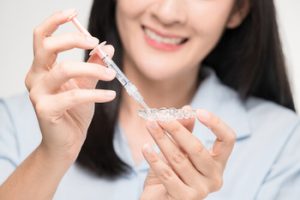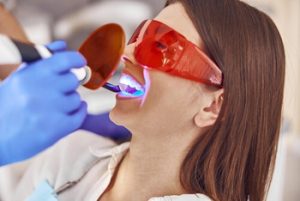A bright, confident smile often leaves a lasting impression when meeting someone for the first time. For many Australians, achieving a whiter smile is a top priority. Whether it’s for a special event, a job interview, or simply to feel more confident in everyday life, professional teeth whitening treatments have become one of the most popular cosmetic dental procedures today.
This guide explores everything you need to know about teeth whitening before and after, including types of whitening treatments, what results you can expect, how to maintain them, and how to navigate common concerns like tooth sensitivity.
Why Consider Teeth Whitening?
Teeth naturally vary in colour, and over time, many people experience tooth discolouration due to ageing, lifestyle habits, and certain foods or drinks. While this is normal, discoloured or stained teeth can sometimes impact self-esteem.

- Coffee
- Tea
- Red wine
- Smoking
- Foods like berries and tomato sauces are known to stain teeth over time
Even with good oral hygiene, surface stains can accumulate. Thankfully, professional teeth whitening provides a reliable way to reverse these effects and restore your natural colour, or even go a few shades lighter.
Understanding the Whitening Process
The whitening process uses bleaching agents such as hydrogen peroxide or carbamide peroxide to remove surface stains and deeper stains within the enamel. The bleaching process breaks down stain compounds and brightens the tooth from the inside out.
There are a variety of whitening treatments available, including at-home options and professional treatment done at your dental clinic.
Types of Teeth Whitening Treatments
1. In-Chair Teeth Whitening (Including Zoom Teeth Whitening)
In-chair teeth whitening is carried out by a dentist and delivers quick results. The Zoom teeth whitening treatment uses a powerful light to accelerate the whitening gel, allowing the bleach to work more effectively in a short period.
- Phillips Zoom is one of the most well-known options and can lighten teeth up to 8 shades lighter in one appointment.
- The Zoom teeth procedure typically takes around 45–60 minutes.
- Results are noticeable right after the session.
This treatment is ideal for patients who want dramatic, fast results, such as before a wedding, event, or photoshoot.
2. Take-Home Whitening Kits
Some dentists offer customised take-home whitening kits with professional-grade whitening gel and trays that fit your mouth. These kits are generally worn for a set time each day over one to two weeks.
Although results take longer to appear than in-chair treatments, they’re still significantly better than over-the-counter options.
 3. Over-the-Counter Products
3. Over-the-Counter Products
- Whitening strips
- Whitening toothpaste
- Whitening pens and gels
These options are the most accessible but tend to have limited impact since the bleaching agents are much weaker. They can remove surface stains but are less effective on deeper stains.
Teeth Whitening Before and After: Realistic Expectations
Setting realistic expectations is crucial when exploring teeth whitening treatments before and after results. While most people achieve a brighter and noticeably whiter smile, results vary depending on the starting shade, enamel health, and type of stains.
Surface vs Deeper Stains
- Surface stains (from food and drink) respond well to most whitening products.
- Deeper stains (from medications or trauma) may require stronger bleaching agents or alternate cosmetic options like porcelain veneers.
A dental consultation can guide you toward the most suitable treatment based on your individual needs and expected outcomes.
Tooth Discolouration: Common Causes
To better understand the effectiveness of teeth whitening treatments, it helps to know the cause of tooth discolouration. Some discolouration is extrinsic (on the outside), while some is intrinsic (inside the tooth):
- Extrinsic Stains: From coffee, tea, red wine, tobacco, and food.
- Intrinsic Stains: From trauma, ageing, or overuse of fluoride as a child.
Whitening treatments work best on extrinsic stains, though some professional solutions can improve intrinsic discolouration as well.
Is Teeth Whitening Safe?
Yes, when done properly, teeth whitening is considered a safe and effective way to enhance your smile. However, safety depends on:
- The strength of the bleaching agent
- Proper application
- Guidance from a qualified dentist
Using whitening products improperly or too often may lead to tooth sensitivity, irritation of the gums, or damage to the enamel.
It’s best to speak with your dentist before beginning any treatment regimen for whitening.
Managing Tooth Sensitivity During Whitening
One of the most common side effects is tooth sensitivity, especially with strong bleaching agents like hydrogen peroxide. Those with tooth sensitivity may be advised by their dentist to try:
- A desensitising toothpaste
- Using fluoride gel before and after whitening
- Spacing out treatments
- Avoiding very cold or hot drinks immediately after whitening
Sensitivity usually subsides within a few days, but it’s important to let your dentist know if it persists.
What to Expect After Treatment
Immediate Results
Professional whitening treatments, particularly Zoom teeth whitening, offer rapid changes. You’ll leave your appointment with a whiter smile and noticeable difference in just one visit.
Your teeth whitening results may continue to improve slightly over the next 24–48 hours.
Short-Term Care
After any whitening procedure, you should:
- Avoid staining foods and drinks (e.g. coffee, tea, red wine, curry, and beetroot)
- Refrain from smoking
- Stick to a “white diet” for at least 24 hours (e.g. rice, chicken, milk)
This helps the whitening treatment set properly and prevents new stains.
Long-Term Care and Maintenance
To maintain results and keep your whiter teeth looking their best, follow these habits:
- Floss regularly to remove food debris and plaque
- Use a soft-bristled brush and whitening toothpaste
- Limit consumption of staining foods and beverages
- Rinse your mouth or brush after eating pigmented food
- Keep up with routine dental cleanings
Is Everyone a Candidate for Whitening?
While most people are good candidates for whitening, it’s not suitable for everyone.
Whitening may not work for:
- Patients with dental restorations like crowns, bridges or porcelain veneers (they won’t respond to bleaching)
- People with untreated dental concerns, like cavities or gum disease
- Individuals with highly worn enamel
Seeing your dentist for a consultation will clarify whether whitening is suitable and safe for your teeth.
 Choosing Professional Teeth Whitening
Choosing Professional Teeth Whitening
Although DIY kits can offer convenience, professional teeth whitening remains the gold standard for both safety and results. Dentists have access to the latest technology and tailor each treatment to your needs, ensuring the right bleaching agent, technique, and follow-up.
If you’re ready to whiten your teeth, booking a consultation is the best place to start.
Final Thoughts
Brightening your teeth through whitening is an effective, straightforward option to improve your smile and boost your confidence. Whether you’re looking for a quick fix before a big event or a long-term improvement in appearance, there’s a whitening treatment suited to your goals and dental health.
From Zoom teeth whitening to take-home kits, modern options offer flexibility, safety, and excellent results when done correctly.
If you’re considering whitening your teeth or would like to learn more about professional options, book a consultation with Total Care Dental Studio or call (07) 3186 8517.
References
Yetman, D. (2022). ‘How Does Teeth Whitening Work?’. Healthline, 1 December. San Francisco, CA: Healthline Media. https://www.healthline.com/health/how-does-teeth-whitening-work
Colgate. (n.d.). ‘How To Treat Sensitive Teeth’. Colgate. New York, NY: Colgate-Palmolive Company. https://www.colgate.com/en-us/oral-health/tooth-sensitivity/treatment-options-for-tooth-sensitivity
WebMD. (n.d.). ‘Tooth Discoloration: Causes, Prevention, and Treatment’. WebMD. New York, NY: WebMD LLC. https://www.webmd.com/oral-health/tooth-discoloration



 3. Over-the-Counter Products
3. Over-the-Counter Products Choosing Professional Teeth Whitening
Choosing Professional Teeth Whitening